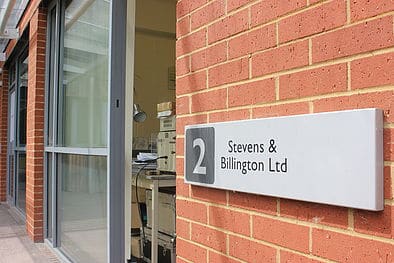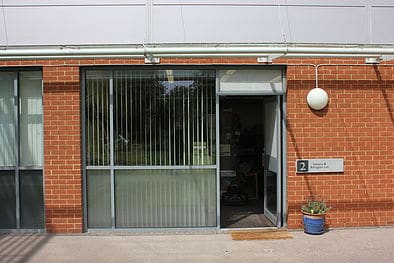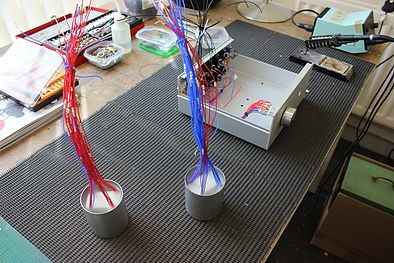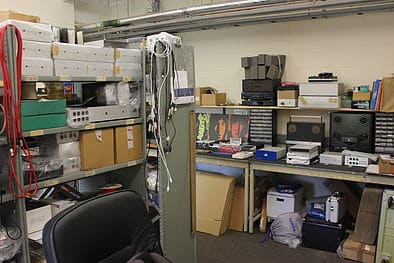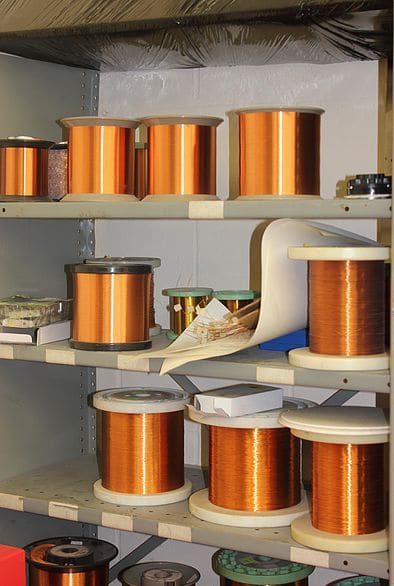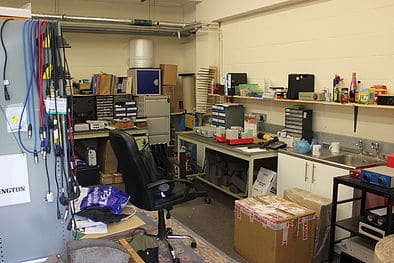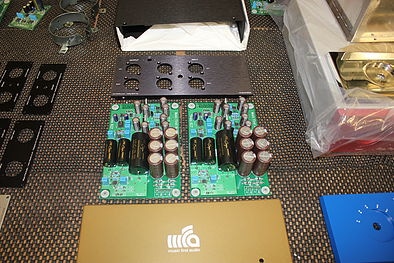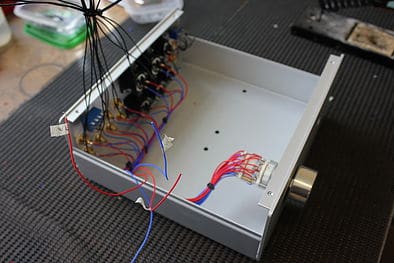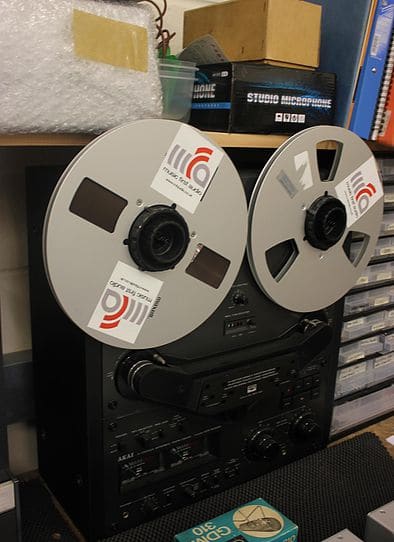The Article
Getting Your Wires Crossed? : Music First Audio
24th March 2016
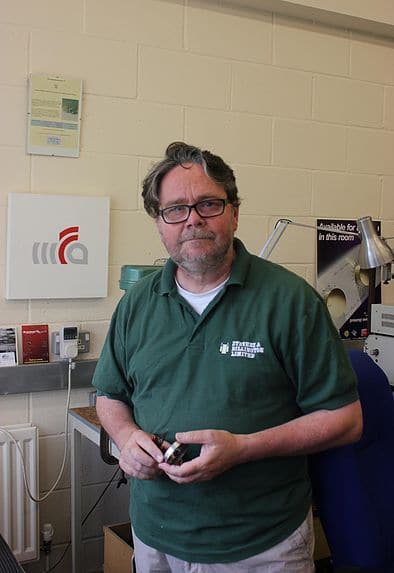
For those readers who are domiciled outside of the UK, the seaside town of Hastings has an important place in English history and within the psyche of its people. It is the scene of a battle that represents the last time that Britain was successfully invaded, back in 1066, by the Normans. This date is often the first that children learn at school, such is its importance. There are also plenty of other historical connections in and around Hastings including stories from the World War 2 era to more studied connections with literary figures and contemporary celebrities.
Possibly more important than all of those, though, is that Hastings was the location for the WW2-based, TV detective series, Foyle’s War, starring Michael Kitchen. As soon as I was met at the train station by Music First Audio (MFA) founder and owner, Jonathan Billington, a quick Foyle’s War tour, seeing the essential TV live location spots, was first on the list. I’m a bit of a fan, you see.
Then it was straight to MFA’s HQ, on the outskirts of the town in a relatively modern technology park complex called The Innovation Centre. MFA is situated in a single unit, a quiet location, broadly faced with silence, a smattering of bird song, the occasional fox and woodpecker and a lake full of lizards. An ideal situation for intense transformer winding, then.
Billington himself is a gentle, quiet man of unassuming demeanour. His actions are relatively slow yet methodical. In fact, in his company, time tends to slow down to a relaxed pace. When Billington finally stands before the Pearly Gates (as we all must do at some point), it won’t be because of any stress-related disease. In fact, I get the feeling that Billington actively shuns, draws away from and discourages atmospheres, situations and people who might create a tense, nervous atmosphere. I also get the feeling that the quality of his life is very important to him. That is not to infer any lack of ambition or industriousness. On the contrary, Billington works very long hours, much longer than most company owners I know and he has high hopes for his products. It’s just that I think that he does what he does because he loves it and no more than that.
There is also something rather old fashioned about Billington. The name sounds rather vintage, to begin with while his family is longstanding and steeped in electronics.
His late mother joined Decca’s home entertainment-centric Brixton premises in 1949, “She used to help with trade shows in Olympia, London,” said Billington, “presenting gramophones valued at around £5,000. That’s a lot of money now, never mind then.” In the same building, Decca used to press 78 records, “Colleagues would often bring test records up to her office. I’ve got zillions of those things in my collection.”
STEVENS & BILLINGTON
Billington’s father left the army in 1948 to work for an electronics company in London called Fortiphone, “My father and Mr Stevens, who previously worked for the BBC (he did the sound for the London Olympics in 1948) became friends and eventually left Fortiphone. There were lots of redundancies being made at the company and my father and Mr Stevens thought that they would be next. They both decided to enter business together as Stevens & Billington in 1963, producing wire-wound components, other electronics plus rheostats, a variable resistor.”
Come 1971 and Stevens left the company to follow a career in making medieval musical instruments as well as installing organs into churches.
From that point, Billington ‘senior’ maintained the business as JS & AR Billington, the AR part being Jonathan’s mother. Working from the household garage from 1971-1975, demand for the Billington-constructed transformer was maintained from the likes of Beyerdynamic, for their microphones, Raindirk’s mixing desk audio business (one of which was installed into Trident studios in London in the 70s), military supplies and PA work.
“That all went swimmingly until 1978,” said Billington, when sadly my father died. My mother then went back into business with Mr Stevens, hence the Stevens & Billington name resurfaced but the Stevens part was now my mother. Mr Stevens was really only there to point my mother in the right direction. My mother was really forced to do this to earn a living and pay the bills. I told her how much I admired her bravery when she leapt into this area. She must have been familiar with how things were done but, even so.”
Jonathan had an interest in electronics from an early age. As a youngster, he would visit Steven’s house to learn how to make transformers, “I remember coming back with my first bag of transformers which were eventually installed into Tower Bridge in London,” said Billington.
In 1978 and 1979, Billington wound transformers for his mother’s company for a year then, because of falling demand, went to work for a company who used to buy Billington transformers, Feedback Instruments Ltd (an education electronics company), “I still supply them with my transformers now. In fact, we’ve been supplying them with transformers since 1963.”
Then something dramatic happened in 1982-83. Punk rock outfit, lead by songwriter and lead vocalist, Paul Weller, split, “I decided to leave full time work at that point. I decided that, because I wouldn’t need money to follow the band all over the country, what was the point in earning a living? I used to go to 10 gigs on one tour, for example.” You could tell that this was a young voice talking couldn’t you?
BACK TO SCHOOL
From there, Billington undertook a degree in Electronics (specialising in acoustics) at the London Polytechnic, “I remember, before starting the course, they interviewed me and decided to test me and others to see how good we were. And what did they give me to work on for my test? A Feedback Instruments piece of education equipment! We built these things and tested them…and they were going to test me! So, of course, I didn’t say anything at the interview about this and raced through this test, as the other students were scratching their heads.”
Armed with acoustic electronics expertise, Billington returned to the family business in 1986. So, now what? He decided to cold call for business. One chap who picked up the phone said, “You won’t be of any use to me but you might want to give the fellow who supplies me with units a ring.” Then he added, “Be careful, he talks quite a lot.” Billington said, “OK, so who’s that then?” And chap replied said, “Tim de Paravacini.”
Billington rang de Paravacini, who was intrigued with Billington and wanted to know more, “First thing he did was buy two transformers, then four and then eight. Then he said, ‘How much to produce a 1 to 10 moving coil step-up transformer?’ I quoted a price. He said that the price was too much for him to sell on and make money from it so he advised that I go and talk with Anthony Michelson of Musical Fidelity, in Wembley. At the time, my mother’s company turnover demanded that I produced enough to make £3,800 all year. Not a lot. It was only the Football Pools rounds that kept me fed and paid bills! After I saw Anthony Michelson and showed him my transformers, he tested them on a test bench, he liked them and said, ‘I’ll have a 100 of them.’ At that time, transformers were £16 each. So I said. Sure, that’d be £1,600. I thought, that’s 50% of my entire years turnover. Then he said, ‘How quickly can I have them?’ I thought, good grief, that’s a lot of work! From there, I chipped away at the audio industry and kept growing.” Other customers would include Quad, Audion, Audio Note and more.
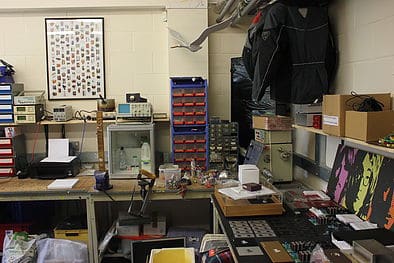
It then dawned upon Billington that, if you sell a transformer to someone for £16, they then put that in a box and sell the box for a lot more than £16. Maybe £500-£600. So Billington decided to invent a hi-fi company. Stevens & Billington lacked any obvious audio direction so Music First Audio was born.
In around 1991 or 1992 Jonathan Billington took over as sole controller of the family business. At that point, he did a lot of broadcast-related work for companies like the BBC plus PA companies. The BBC were putting limiters in their headphones so that engineers wouldn’t deafen themselves: every set of headphones had a mini transformer set inside which acted, strangely enough, as a power supply. When the level going into the transformer became too high, the output voltage of the transformer would then trigger a limiting circuit.
“Later,” said Billington, “I thought to myself, ‘How small can I make a transformer?’ So I produced a very small transformer which no-one knew about or wanted. I took a picture of it and put it on the web in the 90s. A Norwegian company requested two, via email. Then a new order came in for 20…then 200. Then a few months later, they asked for 2,000. Many thousands were built. They said that they were used in airports in sound equipment.”
At that time Billington had a staff of four. Orders such as these triggered many late nights, “We stayed at a farm and slept there. The farmer’s daughter would cook us breakfast and we’d go off again, working all day and night to fulfil the order.”
THE CLASSIC
The Classic was the first proper piece of commercial Music First Audio equipment. You can read more about that pre-amp within the review HERE. The Classic was initially known as the Music First Audio Transformer Volume Control and then, a few years later, the next product that came out was the Mk.II. That was released because customers wanted both bi-amping facilities and remote control. Billington’s American distributor said that he really should append different names to each box. The first product release became the Classic.
“The Classic name has stuck with me. You’ve reviewed the Reference Phono Stage (see the review HERE), my next one will be the Classic Phono Stage, for example.”
But why start a business making a pre-amp at all? Why not a power amp or a CD player? “According to my reasoning,” said Billington, “a passive pre-amp sounds better than an active one with no power supply. As audio transformers are the heart of a passive pre, it seemed sensible to go for that particular hi-fi box. There is a certain joy in avoiding the complications of external power.”
Of course, like any business, the idea is to move forwards, improving products and releasing new example. Many companies do this by testing new components and techniques, in a methodical manner, some almost wing it. This isn’t really Billington’s style, though,“Testing is useful but, more importantly, maths tells you what to do. One of the limiting things in a transformer is what you can squeeze into the space available. With manufacturing, over the years, you realise that you possibly can squeeze more into the available space. There’s also a technique in transforming building. For example, there’s a lot of paper involved. You need to keep your layers flat and reduce inter-winding capacitance. Changes in material help too plus the changes in the symmetry.” Billington’s lunacy is of a detailed, systematic and structured nature, though. For every transformer that he makes includes a test sheet, for example
Of course, pre-amps are not the sole product on the MFA catalogue. He has produced a headphone amp (“It came from the fact that people were plugging my pre-amp into other people’s headphone amps. It’s a sort of addiction to grow. It’s also because, when I go home, I want to listen to as much stuff that I’ve made as possible.”) and has started development on a series of power amplifiers. Using transistors rather than valves (he grew up with transistors, so he’s used to working with them) and discreet components, the new power amps will form a range that will match his pre-amp prices. Expect the first power amp in late 2016.
There’s also a new headphone amplifier on the way. Although, this is a sort of Classic pre-amp/headphone amp hybrid. To be launched at the forthcoming hi-fi show at the UK’s Whittlebury Hall, during mid-September, in the Head Zone, the new unit will be six-input pre-amplifier with a built-in headphone output plus, “an output for the mains system”. The headphone part has been upgraded from the current version, though.
“I also make a range of step-up transformers,” said Billington “Some people don’t like the basic premise of these units but I’d say that’s because they’ve heard bad designs and you need to keep cable lengths very short to minimise cable capacitance. It is passive which is silent gain.”
One quirky product that you may not have heard about from MFA is the Quad-like chassis for the Classic pre-amp. Basically, MFA drops a Classic pre-amp into a chassis that matches either the larger Quad-sized 405 or 606 chassis. This option is still available to interested users out there.
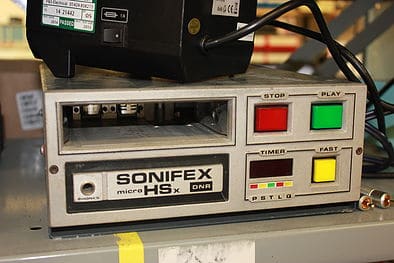
The key to Music First Audio, the core of the entire business, is the transformer: home-made and hand-wired by Billington himself. Arguably, Billington produces the best transformers in Britain, if not the world, “You have to be a bit of a lunatic to derive pleasure from winding these things,” he said. But then maybe that’s why they, like his products, are so good.
Contact: www.mfaudio.co.uk
Tel: 01424 858260
Email: [email protected]
GOING VINTAGE
Jonathan Billington has a liking for vintage technologies such as reel-to-reel tape decks, microphones and computers.
“Reel-to-reel machines sound beautiful. But there’s a practical reason for my interest. I’ve never made CD players or digital players and when you do a hi-fi show you have to play music to people so I can take the best recordings from many different artists and put them on a tape. I could burn them onto a CD but when you put those reels onto a tape machine, people are fascinated by them and you have to impress people with sound.
He can’t really use that excuse for the microphones, though, “I think old microphones look beautiful. Also, ears are an analogue device, sound is an analogue transmission of information. Sure, some microphones have digital outputs but my old bakelite microphones are as pure analogue as you can possibly get.”
For the computers? Nostalgia, pure and simple, “I remember my first Spectrum computer. A beautiful machine.”

